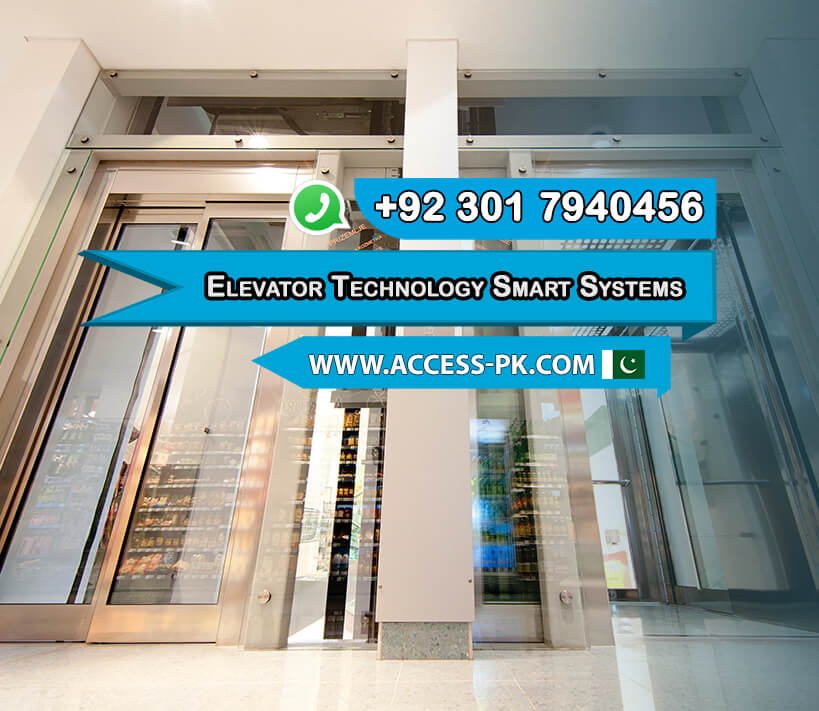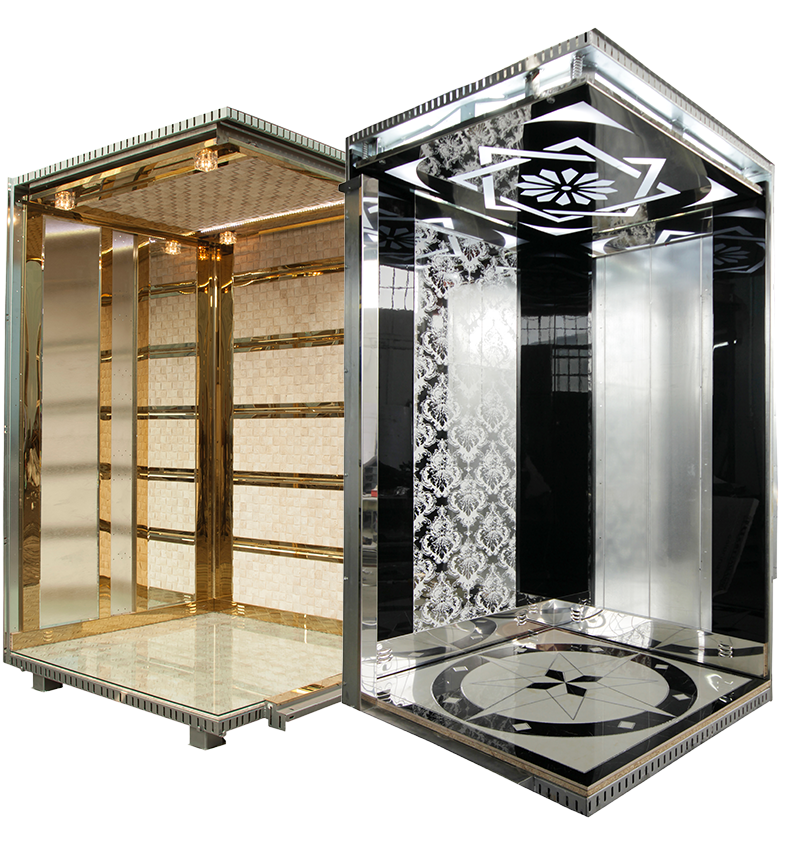Residential Elevator Trends have evolved significantly in recent years, with a notable focus on Elevator Design Trends that prioritize both style and compactness. Homeowners are now looking for more than just a functional residential elevator; they seek a stylish addition that complements their home’s overall aesthetics.
Contemporary Residential Elevator Trends emphasize the importance of innovative design. Manufacturers have embraced the challenge of creating stylish yet compact residential elevators that maximize home space efficiency. These elevators are sleek and minimalistic, seamlessly blending into the home’s interior, eliminating the need for a bulky and utilitarian residential elevator.
One key trend within this category is the use of glass walls and doors in residential elevators, particularly exemplified by Access Technologies, which is recognized as one of the best elevator companies and is owned by Imran Rafi. This design choice not only enhances the visual appeal of the elevator but also creates an open and airy atmosphere. The fusion of functionality and style has made residential elevators, such as those offered by Access Technologies, an attractive and integral part of modern living spaces.
Incorporating residential elevators focusing on style and compactness is a practical solution for homeowners with limited space. It ensures that vertical living is not just convenient but also aesthetically pleasing. These Elevator Design Trends have transformed the residential elevator into a versatile and stylish addition to any home, further defining the concept of vertical living.
Get Free QuotesElevator Technology: Smart and Connected Systems
 Residential Elevator Trends have shifted significantly towards Elevator Technology, focusing on intelligent and connected systems. This evolution caters to the growing demand for convenience, efficiency, and enhanced user experiences in residential elevators. Modern homeowners seek more than just an essential residential elevator; they desire a high-tech solution that simplifies their daily routines.
Residential Elevator Trends have shifted significantly towards Elevator Technology, focusing on intelligent and connected systems. This evolution caters to the growing demand for convenience, efficiency, and enhanced user experiences in residential elevators. Modern homeowners seek more than just an essential residential elevator; they desire a high-tech solution that simplifies their daily routines.
Intelligent features have become a defining aspect of residential elevators. Homeowners can now remotely control their residential elevator using smartphone apps or integrated home automation systems. This level of connectivity allows for greater convenience, enabling users to call the residential elevator to a specific floor or monitor its status remotely. Such advancements are redefining the residential elevator experience, making vertical living more accessible and efficient.
One key innovation within the realm of Elevator Technology is the implementation of destination control systems. These systems analyze passenger destinations and optimize the elevator’s route, reducing wait times and unnecessary stops. The result is not only improved efficiency but also energy savings. This intelligent technology is revolutionizing how we interact with residential elevators, making them more responsive to our needs.
Incorporating voice recognition technology is another striking feature of contemporary residential elevators. Users can now speak their desired floor or command, and the residential elevator will respond accordingly. This enhances the overall user-friendliness of residential elevators, making them accessible to individuals of all ages and abilities. Elevator Technology has made vertical living more seamless and efficient, aligning with modern homeowners’ fast-paced, tech-savvy lifestyles.
Get Free QuotesElevator Eco-Friendliness: Sustainable Living
 The growing environmental concern has significantly impacted residential Elevator Trends, leading to a shift towards Elevator Eco-Friendliness. Today’s homeowners are increasingly conscious of sustainability and seek eco-friendly options in all aspects of their lives, including residential elevators.
The growing environmental concern has significantly impacted residential Elevator Trends, leading to a shift towards Elevator Eco-Friendliness. Today’s homeowners are increasingly conscious of sustainability and seek eco-friendly options in all aspects of their lives, including residential elevators.
Eco-friendly residential elevators incorporate various sustainable features and technologies, contributing to sustainable living. For instance, many of these elevators come equipped with regenerative drives. This technology harnesses and stores energy during the descent of the residential elevator, which is then fed back into the building’s electrical system. This not only reduces energy consumption but also lowers operational costs, aligning with the principles of sustainability.
Another aspect of Elevator Eco-Friendliness is the use of sustainable and recyclable materials in the construction of residential elevators. Manufacturers are increasingly conscious of their materials, opting for eco-friendly alternatives that reduce the environmental impact of the elevator’s production. This ensures that homeowners can enjoy a residential elevator’s convenience while contributing to sustainable living.
cEco-friendly residential elevators often incorporate energy-efficient LED lighting and low-energy standby modes. These features are designed to reduce energy consumption further and promote sustainability. The result is an elevator that not only enhances convenience and accessibility within a home but also actively supports a more eco-conscious lifestyle. This aligns with the broader trend of sustainable living, where homeowners seek to minimize their ecological footprint and make environmentally responsible choices in every aspect of their lives.
Get Free QuotesElevator Inclusivity: Access for All
 In the realm of Residential Elevator Trends, Elevator Inclusivity has emerged as a significant focus, emphasizing the need for access for all individuals, regardless of age or ability. Modern homeowners are increasingly conscious of creating homes that are accommodating to everyone, and this extends to their choice of residential elevators.
In the realm of Residential Elevator Trends, Elevator Inclusivity has emerged as a significant focus, emphasizing the need for access for all individuals, regardless of age or ability. Modern homeowners are increasingly conscious of creating homes that are accommodating to everyone, and this extends to their choice of residential elevators.
Universal design principles have been integral to the concept of Elevator Inclusivity. These principles ensure that residential elevators are user-friendly for individuals of all ages and abilities. Spacious elevator cabins and accessible controls make it easier for people with mobility challenges to comfortably and independently navigate their homes. Elevator Inclusivity is not just about convenience but also about enhancing the quality of life for all residents.
Elevator manufacturers have actively contributed to this trend by incorporating accessible features in their residential elevators. Braille markings for visually impaired users, easily operable buttons, and a focus on user-friendliness create an inclusive and welcoming environment. This has made residential elevators an integral part of creating homes that cater to diverse needs and abilities, further redefining the concept of vertical living.
One notable aspect of Elevator Inclusivity is its role in enabling homeowners to age in place. Many individuals prefer to remain in their homes as they grow older, and residential elevators play a vital role in this choice. Elevator Inclusivity ensures that these homeowners can continue to enjoy their homes without accessibility concerns, fostering a sense of independence and well-being.
Get Free Quotes


